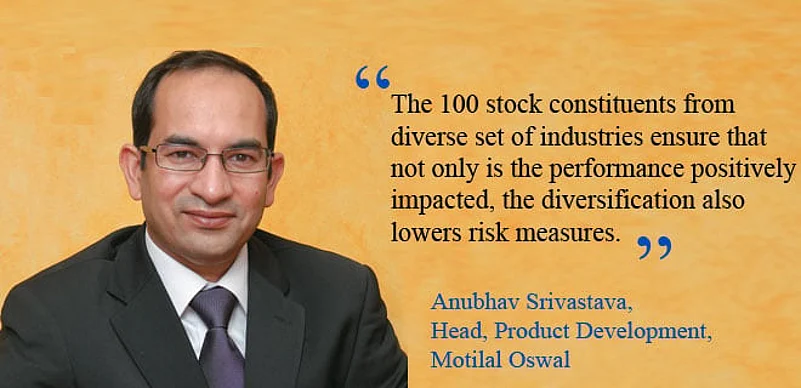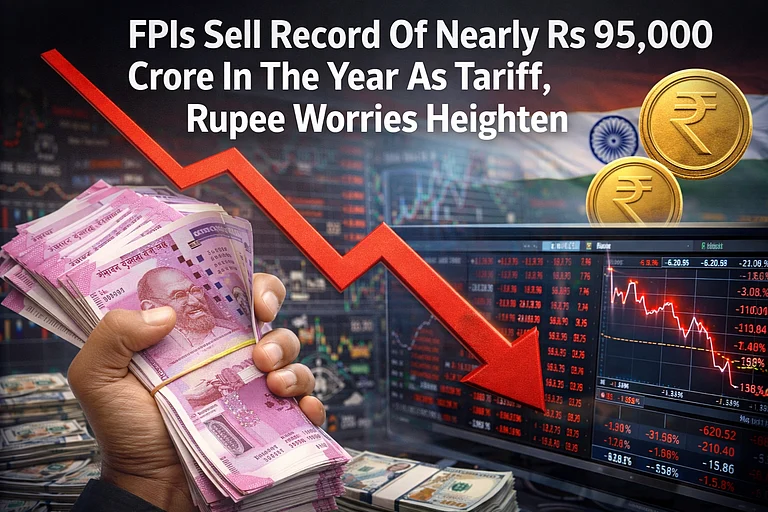In an interview with Outlook Money, Anubhav Srivastava, Head, Product Development, Motilal Oswal, shares his views on Motilal Oswal MOST Shares M100 ETF, and more. Excerpts:
How is Motilal Oswal MOST Shares M100 ETF structured?
The fund is a full replication of the CNX Mid-cap Index. The creation unit is in lots of 250,000 shares (ETF units). In that number or multiples, any investor can approach the AMC for a direct creation, or, redemption. Any investor can make an investment by buying a single unit of M100 ETF on the exchange.
What is the variation in its portfolio compared to the CNX Mid-cap index that it follows?
There is no variation in the portfolio— all constituents of the CNX Mid-cap Index are included in the ETF. The performance of an ETF is a function of its tracking error. For this ETF, we have used execution efficiency and other means to keep the tracking error as low as possible, making it an attractive product to invest into.
What has worked for this fund’s performance in the past one year?
The construct of the portfolio ensures that the companies that are included are largely higher growth ones which are also market leaders in their business areas. These companies tend to perform well as the economic environment and sentiment improves. Furthermore, as this ETF replicates an index, any non-performing stock will continue to reduce in weightage, and will eventually exit the index. This automatic process helps with maintaining the portfolio. The 100 stock constituents from diverse set of industries also ensure that not only is the performance positively impacted, the diversification also lowers risk measures as compared to the large-cap indices.
What kind of investors is this fund suited for?
This ETF is the only passive market access to the mid-cap segment in the country. As such, this is a very democratic product, suitable to any investor looking to access the midcap segment passively. Investors (or their advisors or asset allocators) could use the M100 ETF to diversify their large- or small-cap exposure, take a fresh exposure to mid-cap segment, or, merely to broadbase a mid-cap portfolio. It is also of interest to foreign investors, who may be looking for mid-cap exposure as a whole. Structured product developers will find it useful to execute long, short, or, hedged strategies using the ETF and other facilities available from leading exchanges in India.
Where do you see mid-caps going from here?
Mid-caps are largely India-focused companies (with some exceptions). They will continue to perform well with high economic growth. They will also be less impacted by global trends, as their revenue streams are largely domestic, unlike headline index constituents. But, we may see some short-term volatility on account of larger market movements.
The article first appeared in Outlook Money, May 2015 edition













